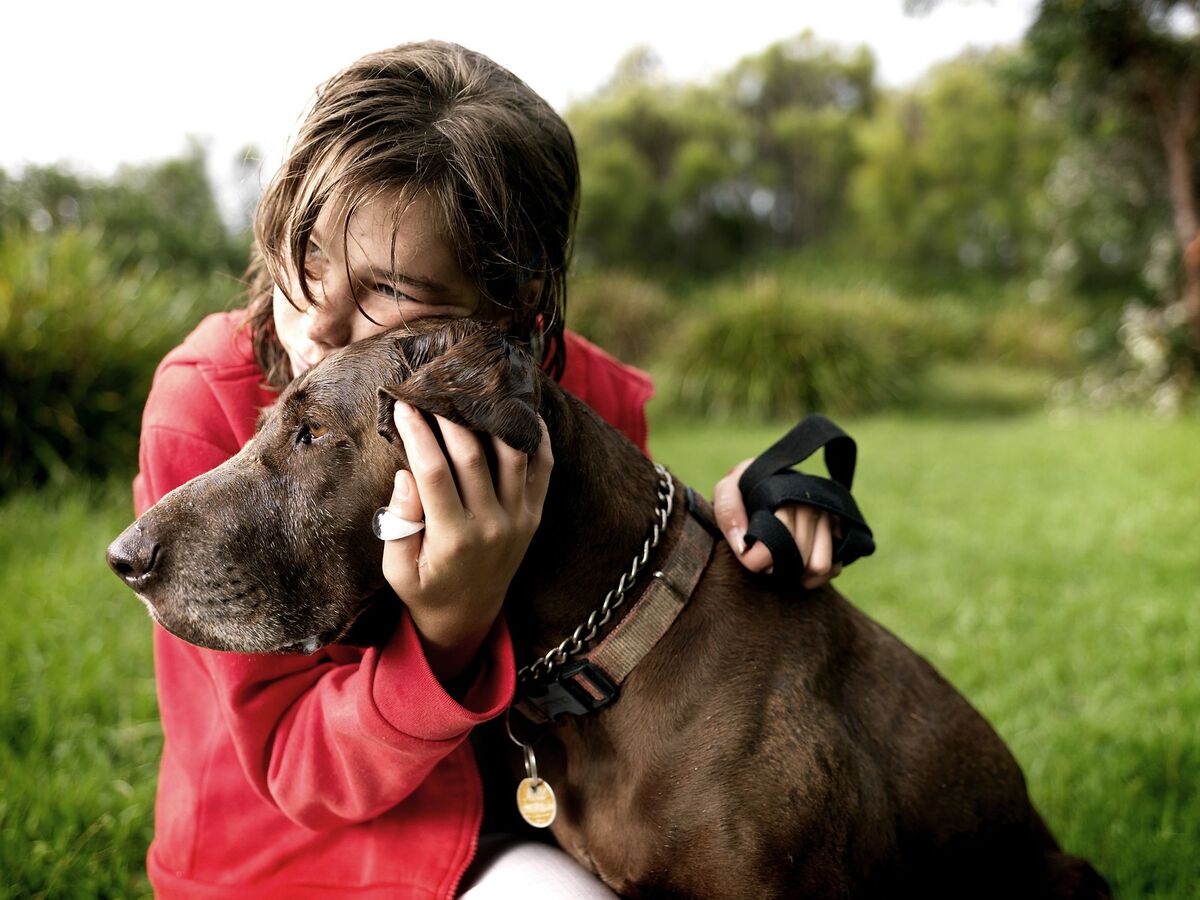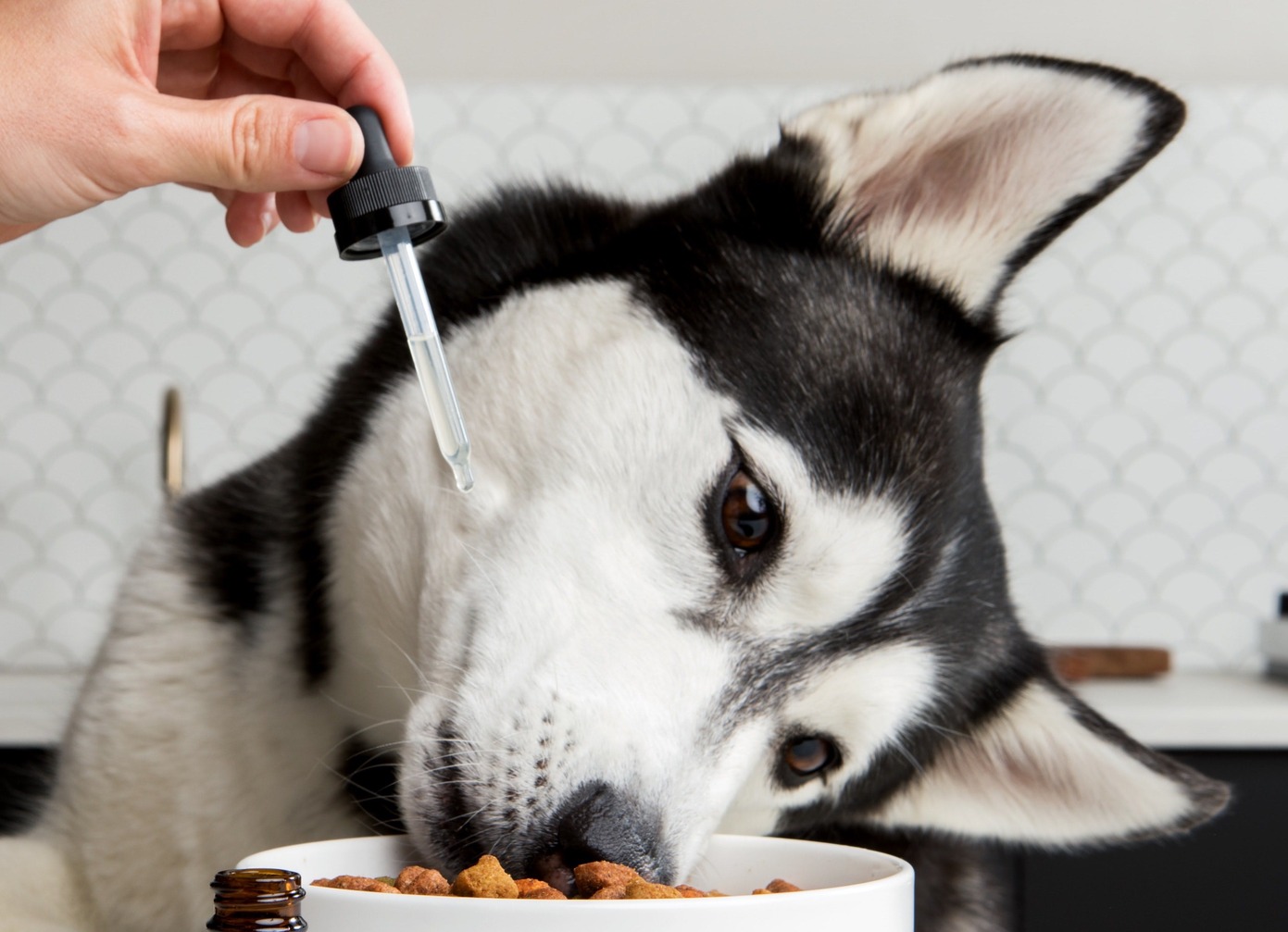Home>Health & Wellness>Common Health Issues>When Should I Put Down My Diabetic Dog?


Common Health Issues
When Should I Put Down My Diabetic Dog?
Modified: February 21, 2024
Learn about common health issues in diabetic dogs and when it may be time to consider end-of-life care. Understand the signs and symptoms to make informed decisions for your beloved pet.
(Many of the links in this article redirect to a specific reviewed product. Your purchase of these products through affiliate links helps to generate commission for Pawsomeoldies.com, at no extra cost. Learn more)
Table of Contents
Introduction
When a beloved pet is diagnosed with diabetes, it can be a challenging and emotional journey for both the pet and their human family. As the disease progresses, pet owners may face difficult decisions regarding their diabetic dog's care and quality of life. One of the most heart-wrenching decisions is determining when it may be time to say goodbye.
Understanding the complexities of managing a diabetic dog's health and well-being is crucial for making informed decisions. This includes recognizing the signs that indicate a decline in the dog's quality of life and discussing these concerns with a trusted veterinarian. Ultimately, the decision to put down a diabetic dog is deeply personal and requires careful consideration of the dog's comfort and dignity.
In this article, we will explore the sensitive topic of when to consider euthanasia for a diabetic dog. We will delve into the signs that may indicate a decline in the dog's well-being, the importance of assessing the dog's quality of life, and the significance of open communication with a veterinarian. Additionally, we will discuss the emotional aspects of making this decision and offer guidance on coping with the loss of a cherished canine companion.
As we navigate this delicate subject, it's essential to approach it with empathy and understanding. The bond between a pet and their human family is profound, and the decision to say goodbye to a diabetic dog is a deeply personal and emotional process. By providing insight and support, we aim to assist pet owners in navigating this challenging chapter with compassion and clarity.
Read more: When To Put Your Dog Down Due To Arthritis
Understanding the decision
Understanding the decision to consider euthanasia for a diabetic dog is a deeply emotional and complex process. It involves a profound consideration of the dog's well-being, quality of life, and the pet owner's responsibilities as a caregiver. When a dog is diagnosed with diabetes, pet owners are faced with the ongoing management of the disease, which may include insulin injections, dietary adjustments, and regular veterinary monitoring. Despite these efforts, the progression of diabetes can lead to complications and a decline in the dog's health.
As the disease advances, pet owners may observe changes in their dog's behavior, energy levels, and overall demeanor. It is essential to recognize that the decision to consider euthanasia is rooted in the dog's welfare and ensuring that they are not suffering. This decision is not made lightly but is driven by a deep sense of love and compassion for the dog.
Pet owners must also grapple with their own emotions and the difficult realization that their cherished companion may be nearing the end of their journey. It is a time of profound introspection, requiring pet owners to carefully assess the dog's comfort and quality of life. This introspection involves observing the dog's ability to engage in activities they once enjoyed, their appetite, and their overall happiness.
Additionally, pet owners may consider the financial and emotional burdens associated with managing a diabetic dog's care, especially if the dog's health is deteriorating despite medical interventions. This can lead to a profound sense of responsibility and the need to make decisions that prioritize the dog's well-being.
Ultimately, understanding the decision to consider euthanasia for a diabetic dog involves a deep sense of empathy and a commitment to ensuring the dog's dignity and comfort. It is a decision that arises from a place of love and devotion, as pet owners strive to act in the best interest of their beloved canine companion. This process requires careful reflection, open communication with veterinary professionals, and a profound understanding of the bond between a pet and their human family.
Signs to look for
Recognizing the signs that may indicate a decline in a diabetic dog's well-being is crucial for pet owners who are navigating the challenging decision-making process. These signs serve as important indicators of the dog's quality of life and can guide pet owners in assessing the dog's comfort and overall health.
-
Persistent Health Issues: Diabetic dogs may experience a range of health issues, including recurrent infections, slow-healing wounds, and complications related to the disease. Persistent health problems that significantly impact the dog's daily life and well-being may signal a decline in their overall health.
-
Loss of Appetite: A noticeable decrease in the dog's appetite, particularly if it persists over an extended period, can be a concerning sign. Diabetic dogs may also experience fluctuations in their blood sugar levels, which can affect their appetite and energy levels.
-
Lethargy and Weakness: A lack of energy and increased weakness in a diabetic dog can indicate a decline in their overall vitality. If the dog shows reluctance to engage in activities they once enjoyed or struggles with mobility, it may be a sign of deteriorating health.
-
Changes in Behavior: Observing significant changes in the dog's behavior, such as increased agitation, restlessness, or disorientation, can be distressing for pet owners. These behavioral changes may be indicative of discomfort or pain experienced by the dog.
-
Incontinence and Accidents: Diabetic dogs may experience urinary or fecal incontinence as a result of their condition. If the dog begins to have frequent accidents in the house or shows signs of distress related to incontinence, it can impact their quality of life.
-
Chronic Pain: Dogs with diabetes may develop complications that lead to chronic pain, such as neuropathy or joint issues. Recognizing signs of persistent pain, including vocalization, reluctance to move, or changes in posture, is essential in assessing the dog's well-being.
-
Diminished Enjoyment of Activities: A noticeable decline in the dog's interest in activities they once found enjoyable, such as walks, playtime, or social interaction, can be indicative of a decrease in their overall quality of life.
By being attuned to these signs and changes in their diabetic dog's well-being, pet owners can gain valuable insights into the dog's comfort and happiness. These observations, when discussed openly with a veterinarian, can contribute to informed decision-making regarding the dog's care and quality of life.
Quality of life considerations
Assessing the quality of life of a diabetic dog is a deeply nuanced and compassionate process that requires careful observation and introspection. It involves evaluating the dog's physical comfort, emotional well-being, and ability to engage in activities that bring them joy. When considering the dog's quality of life, pet owners must approach the assessment with empathy and a deep understanding of the bond they share with their canine companion.
Physical comfort plays a pivotal role in determining the dog's quality of life. This encompasses the management of pain, discomfort, and any health issues that may arise as a result of diabetes. Observing the dog for signs of distress, discomfort, or difficulty in performing daily activities can provide valuable insights into their physical well-being. Additionally, ensuring that the dog's medical needs are met, including pain management and supportive care, is essential for maintaining their comfort and dignity.
Emotional well-being is equally significant in evaluating the dog's quality of life. Dogs are sentient beings capable of experiencing a range of emotions, and their emotional state profoundly influences their overall well-being. Pet owners should observe the dog for signs of contentment, anxiety, or distress, as these emotional indicators offer valuable clues about the dog's inner world. Providing a nurturing and supportive environment that fosters emotional security and companionship is integral to preserving the dog's emotional well-being.
The ability to engage in activities that bring joy and fulfillment is a fundamental aspect of a dog's quality of life. Whether it's enjoying leisurely walks, engaging in playtime, or relishing social interactions, the dog's capacity to partake in these activities reflects their overall vitality and happiness. Observing the dog's enthusiasm for these activities and their willingness to participate can provide meaningful insights into their quality of life.
Furthermore, the dog's capacity to maintain their dignity and autonomy is a crucial consideration in assessing their quality of life. Preserving the dog's sense of agency and ensuring that they can carry out essential functions, such as eating, drinking, and moving comfortably, contributes to their overall well-being and dignity.
Ultimately, evaluating the quality of life of a diabetic dog requires a holistic understanding of the dog's physical, emotional, and behavioral aspects. It demands a deep sense of empathy, keen observation, and a commitment to prioritizing the dog's comfort and happiness. By carefully considering these quality of life considerations, pet owners can navigate the challenging decision-making process with compassion and clarity, ensuring that the dog's well-being remains at the forefront of their considerations.
Discussing with your veterinarian
Initiating an open and honest dialogue with a trusted veterinarian is a pivotal step in navigating the complex decision-making process regarding a diabetic dog's well-being. Veterinarians play a crucial role in providing expert guidance, compassionate support, and invaluable insights into the dog's health and quality of life. When considering the possibility of euthanasia for a diabetic dog, engaging in a candid conversation with a veterinarian can offer pet owners clarity, empathy, and informed perspectives.
During the discussion, pet owners can share their observations and concerns regarding the dog's behavior, physical well-being, and overall quality of life. This may include detailing any changes in the dog's appetite, energy levels, mobility, and emotional state. By providing a comprehensive overview of the dog's well-being, pet owners enable veterinarians to gain a deeper understanding of the dog's current condition and the challenges they may be facing.
Furthermore, veterinarians can offer professional insights into the dog's medical status, including the management of diabetes, any potential complications, and the impact of the disease on the dog's overall health. This expert assessment can provide pet owners with a comprehensive understanding of the dog's medical needs and any measures that can be taken to alleviate discomfort and enhance the dog's well-being.
In addition to medical considerations, discussing the emotional and ethical dimensions of the decision with a veterinarian can offer invaluable support to pet owners. Veterinarians are equipped to provide compassionate guidance, ethical perspectives, and emotional support during this challenging time. Their expertise can help pet owners navigate the emotional complexities of considering euthanasia, ensuring that the decision is approached with empathy, understanding, and a deep commitment to the dog's welfare.
Ultimately, engaging in open communication with a veterinarian fosters a collaborative approach to decision-making, where the dog's well-being remains the central focus. By sharing insights, concerns, and emotions with a trusted veterinarian, pet owners can gain clarity, compassion, and professional guidance, empowering them to make informed decisions that prioritize the dog's comfort, dignity, and quality of life.
Read more: When To Put Your Dog Down With Cancer
Making the decision
Making the decision to consider euthanasia for a diabetic dog is a deeply emotional and weighty process that requires careful introspection and empathy. It involves a profound consideration of the dog's well-being, quality of life, and the enduring bond between the pet and their human family. When faced with this pivotal decision, pet owners are tasked with navigating a complex terrain of emotions, responsibilities, and the fundamental desire to act in the best interest of their cherished canine companion.
The decision-making process begins with a deep reflection on the dog's comfort, dignity, and overall quality of life. Pet owners must earnestly assess the dog's physical well-being, emotional state, and their ability to engage in activities that bring them joy. This introspection involves observing the dog's behavior, energy levels, and any signs of distress or discomfort. Additionally, pet owners may consider the impact of the dog's medical needs, financial burdens, and the emotional toll of managing a diabetic dog's care.
Engaging in open and honest discussions with a trusted veterinarian is a pivotal aspect of making this decision. Veterinarians can offer professional insights, compassionate support, and ethical perspectives that guide pet owners through this challenging process. By sharing their observations, concerns, and emotions with a veterinarian, pet owners gain clarity, empathy, and informed perspectives, empowering them to make decisions that prioritize the dog's well-being.
Furthermore, pet owners may seek solace and guidance from supportive networks, including friends, family, and fellow pet owners who have navigated similar experiences. These connections provide emotional support, understanding, and a sense of solidarity during this deeply personal journey.
Ultimately, the decision to consider euthanasia for a diabetic dog is rooted in a profound sense of love, compassion, and the unwavering commitment to ensuring the dog's comfort and dignity. It is a decision that arises from a place of empathy, understanding, and the enduring bond between a pet and their human family. By approaching this decision with compassion, introspection, and open communication, pet owners honor the cherished companionship they share with their diabetic dog, ensuring that their well-being remains at the forefront of the decision-making process.
Coping with the loss
Coping with the loss of a beloved diabetic dog is an emotionally profound and deeply personal experience. The bond between a pet and their human family is one of unconditional love, companionship, and cherished memories. When the time comes to say goodbye to a cherished canine companion, pet owners are confronted with a range of emotions, including grief, sorrow, and a profound sense of loss.
Navigating the journey of grief involves acknowledging and honoring the significance of the bond shared with the diabetic dog. It entails embracing the memories, moments of joy, and the enduring impact the dog had on the lives of their human family. Reflecting on the cherished moments, playful antics, and unwavering loyalty of the dog can offer solace and a sense of connection amidst the grief.
Seeking support from understanding friends, family members, and fellow pet owners can provide a vital source of comfort and empathy during the grieving process. Sharing memories, expressing emotions, and finding solace in the understanding of others fosters a sense of community and understanding. Additionally, engaging in open conversations about the profound impact of the dog's presence and the depth of the loss can offer a cathartic release and a pathway to healing.
Honoring the memory of the diabetic dog through meaningful tributes and acts of remembrance can provide a sense of closure and reverence. Creating a memorial, planting a tree in the dog's honor, or assembling a photo album of cherished moments can serve as poignant tributes to the enduring legacy of the beloved companion. These acts of remembrance celebrate the profound bond shared with the dog and offer a tangible expression of love and gratitude.
Embracing self-care and allowing oneself the space to grieve is an essential aspect of coping with the loss. Engaging in activities that provide comfort, solace, and emotional release, such as spending time in nature, journaling, or seeking professional support, can aid in the healing process. It is important to acknowledge the depth of the emotions experienced and to allow oneself the time and space needed to navigate the journey of grief.
Ultimately, coping with the loss of a diabetic dog involves honoring the enduring bond, seeking support, and embracing the healing power of remembrance. While the loss may bring profound sorrow, the memories, love, and companionship shared with the dog remain eternally cherished, offering solace and comfort amidst the journey of grief.














